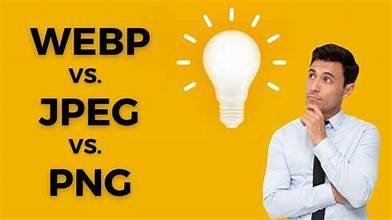Choosing the right image format is one of the most important decisions for website performance. For years, JPG and PNG dominated the internet. But with the rise of WebP, webmasters now have a smarter choice.
This blog compares WebP with JPG and PNG to help you decide which format works best for your website.
JPG – The Old Workhorse
- Strengths: Good for photos, decent quality at small sizes.
- Weaknesses: Loses quality after compression, doesn’t support transparency.
- Use Case: Photographs where slight compression loss isn’t noticeable.
PNG – The Heavyweight Champion of Quality
- Strengths: Supports transparency, sharp detail, lossless compression.
- Weaknesses: File sizes are very large (bad for speed).
- Use Case: Logos, icons, graphics with transparency.
WebP – The Modern Solution
- Strengths: Combines best of JPG and PNG.
- Smaller file size (30–50% reduction).
- High-quality images even after compression.
- Supports transparency + animation.
- Weaknesses: Older browsers (Internet Explorer) don’t support WebP.
- Use Case: General website images, product photos, banners, graphics.
Real-Life Example
Let’s say you upload a product image:
- JPG = 400 KB
- PNG = 700 KB
- WebP = 180 KB
👉 By choosing WebP, your page loads 3–4x faster without losing visual quality.
SEO Benefits of WebP
Google rewards websites that load faster. WebP reduces file size, which improves:
- Core Web Vitals (LCP, FID, CLS)
- Mobile page speed
- Search engine rankings
Conclusion
- Use JPG if compatibility with old systems is required.
- Use PNG for transparent logos or designs.
- Use WebP for almost everything else—it’s lighter, faster, and SEO-friendly.
👉 Compress and optimize WebP images now at ShrinkWebPSize.com.


